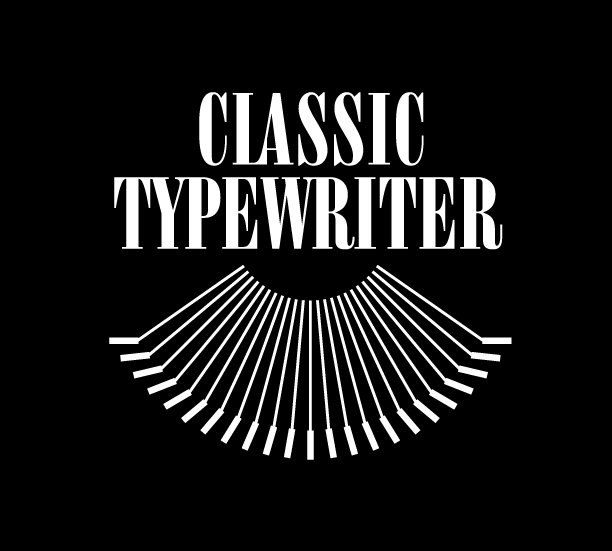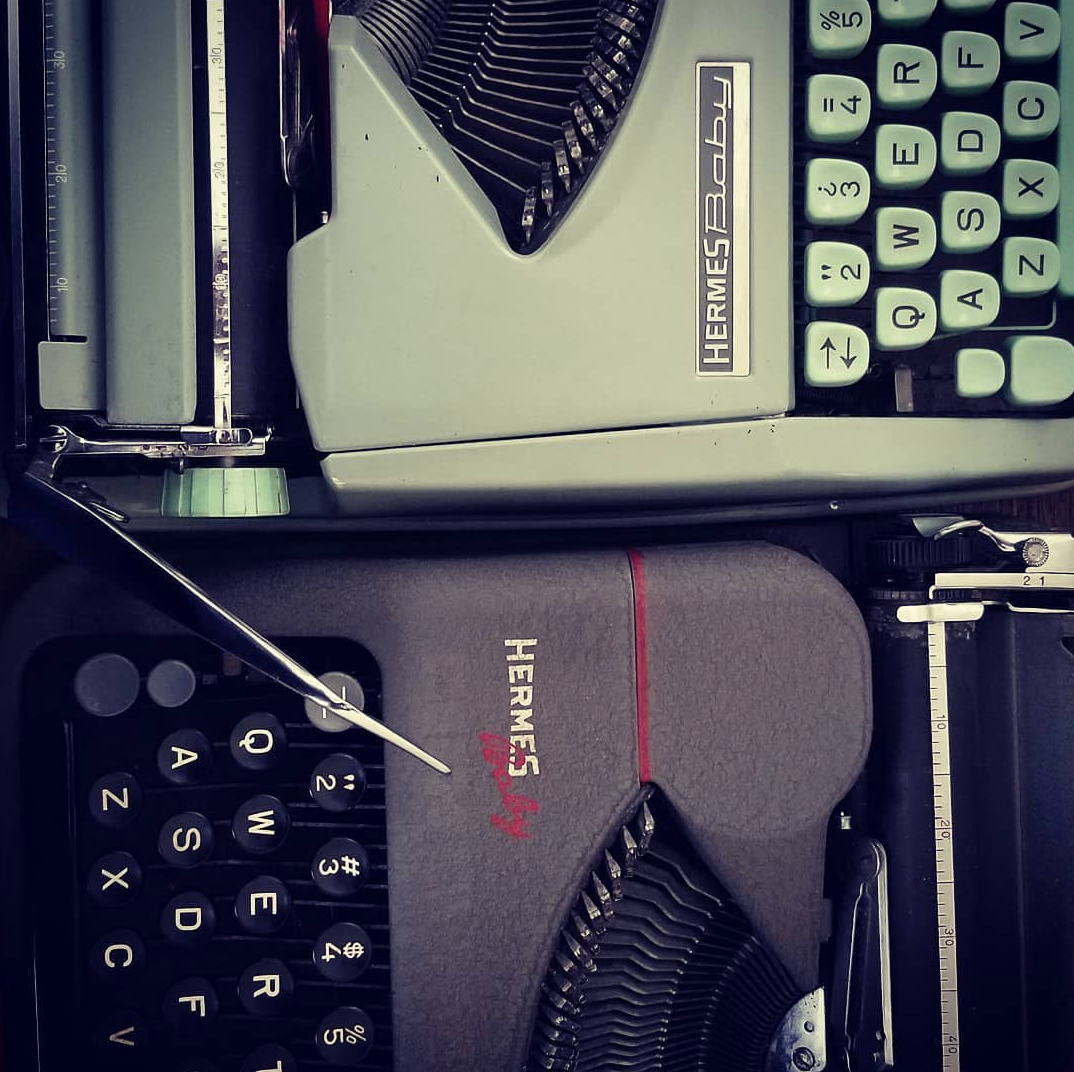Frequently Asked Questions
But hark! First… obligatory eye candy:
(Ah).
Ok… Hi!
I’m glad you’re here. I’m glad you’re venturing into the world of vintage writing machines!
It’s changed my life profoundly. Perhaps it will yours as well.
Here are answers to a few commonly asked questions.
Why vintage writing machines in the digital era?
You’ve probably already answered this if you’re here.
As you’ve seen, the digital world is fraught with peril. Also, a computer is rife with potential distractions. Some of the greatest masterworks in literary history were produced before computers, on what we now refer to as a ‘vintage typewriter’.
Are typewriters still being manufactured?
Sort of. There are a few cheap plastic toys bei g produced. There was an Olivetti machine that went out of production 10 or so years ago.
Most people choose older machines, because they are of higher quality.
There is a sweet spot. Some machines are so old, they are more like antiques. They work, but they’ll need a little more fussing to work ‘perfectly.’ The balance of inspiration may be worth it. I tend to use machines from the late 30’s, and write thousands of pages.
But I also like fussing with machines sometimes.
If you want to write and do as little machine work as possible, a 50’s ot 60’s machine might be your best bet.
Can you still get ribbons?
Yes! Fortunately, you can find a cornucopia of ribbon options on Ebay and even Amazon, as well as various vintage typewriter shops online or in your area. Support the ‘little people’ when you can so digital empires don’t take over the world! I also offer individual typewriter ribbons in my store as well as monthly ribbon subscriptions. They are here.
Note: ribbons come on plastic spools, for the most part. Originally, they were metal (see below). I offer an upgrade at the links. Either works. Metal just seems cool.
Nylon are what most ribbons are made of. That’s been the standard since the 70’s. There is also cotton and silk. They have a nice look, dark, last longer. They also clog up the type slugs more. Not a huge deal, you can scrub them off pretty easily.
What kind of paper do I use?
Any, really. 8.5 x 11 is standard letter size. Computer printer paper works well. You may already have some around!
As an upgrade, you can use something like cotton resume paper.
The paper I include the note on I get from a supplier, a deckled-edge cotton weave. More of a hand-made quality. You can also experiment with hand-made papers from Etsy and elsewhere.
Traditionally, vintage typewriter paper was very thin, almost like old Xerox paper. Your machine and rollers will determine how well you can type on thicker papers, like card stock.
Older machines do worse with thick paper, generally. Later machines can take card stock even.
Some people use a backing sheet, meaning a sheet behind the typewritten sheet, to get a cleaner impression. Because the platen (rubber roller) can be quite hard. This can support.
What do Classic Typewriter machines come with?
Every machine comes inspected, serviced, and ready to write, with a new ribbon installed. I usually install it on the original vintage metal ribbon spool, when I have one available.
I always sell portable machines with a case, and the case will at least keep it safe during shipping. (Certain models have weak links when it comes to cases, and I’ll discuss that by model in other places). Sometimes I’ll send in a flight case, if the original us too far gone.
I include a digital manual, original if available, and a video tutorial with an email with some tips on getting started. Most models include a video tutorial.
Sometimes I include other interesting sundries if I find them.
I do:
I install rubber feet as needed. There are new feet available for most models.
I replace the rubber or resurface the platen depending upon need.
I replace or resurface front and rear feed rollers.
I wind ribbon onto vintage spools whenever possible and always for higher-end models.
I don’t:
Take apart the whole machine and polish each part.
Replace every part automatically; it depends on need. I tend to think that the original parts are always better in terms of quality.
Do I need anything else to get started?
No! You’ll be ready to write. If a machine isn’t ready to write, I don’t sell it.
You may want to find a cover and a typewriter pad. Those are not necessary, but are sometimes nice to have with certain models. The pad just buffers the sound somewhat, and keeps the machine from slipping around on its sometimes stiff old rubber feet.
Is it easy to learn to type?
A keyboard is a keyboard, right?
Not exactly. Typewriters, especially manual vintage typewriters, require more pressure. This has its pros and cons.
For one thing, it is more of an embodied process. I like to type standing up (Like Ernest Hemingway did). While he used a bookshelf, there are now standing desks available!
It takes practice, but it is worth learning to ‘touch type’, meaning, not only plunking out single letters with your index fingers. You can get really fast on a typewriter.
There are so many options, I can’t decide!
My advice would be to choose. Any machine will get you started. You can’t know what you want until you discovery, through your machine and your process, what you need.
That being said, many would-be writers spend too much time salivating over a litany of writing machines instead of writing. Remember, Cormac Mcarthy wrote millions of words on one machine, with little or no maintenance.
Speaking of maintenance, what will I need to do?
Nothing, really.
I used a Smith Corona Silent for 20 years without doing anything with it. The best thing to do is not to let too much dust settle on an unused machine! If it does, you can blow it out with an air can or your lips. Keep it in the case or under a cover while not in use. I always set a book on my Silent. But if you keep it in the cover for too long, it may develop a mildewy, musty smell. (80 year old cloth and plywood does that).
If you do decide to oil a machine, use only synthetic oil, and very lightly at that, and never on the type bars. (That gets them to collect more dust). I use one called Liquid Bearings. Less is definitely more.
You’ll need to change the ribbon every few months or so, depending on use and how dark of an imprint you like. Changing it is a little bit of a learning process: consult your manual.
It’s easier on the later machines.
What if I have problems?
All of my machines come with a working guarantee. If something doesn’t work, you can send it back or I’ll walk you through the fix, or pay for a repair.
They also include a warranty of around a year for normal wear and tear.
Often we can troubleshoot problems virtually.
We will get it up and running for you!
The most common problem is either not knowing how to use a machine, or a drawband slipping off. Sometimes it breaks, though this is rare (one in 100 machines or so). Anyway, that is a very minor problem to have.
In some states, there are typewriter techs still working on these things as well. They can be a valuable resources.
Do You Purchase Vintage Typewriters?
Yes! Occasionally I will purchase antique typewriters. I do not purchase electric typewriters. If it is rusty or completely inoperable, I would also probably not be interested in purchasing it.
If you would like to inquire about selling your machine or possibly trading it up for one of the machines I offer, please fill out our Purchase Request Form.
I will get back to you as soon as possible but please be patient as we are very busy here!
How Do I Take Advantage of your Lifetime Trade In Policy?
All of my machines come with a lifetime trade in policy.
To take advantage of our trade in policy, get details here: Lifetime Trade In Policy Form
Where can I find you?
I keep a substack here and a shop here.
You’ll also find me ruminating on healing and awakening.
I only sell machines online: I don’t have a showroom currently/
___
If you have other questions, please don’t hesitate to send me a message.
Write on,
Steven Budden Jr.
Classic Typewriter Co.
Chapel Hill, North Carolina

